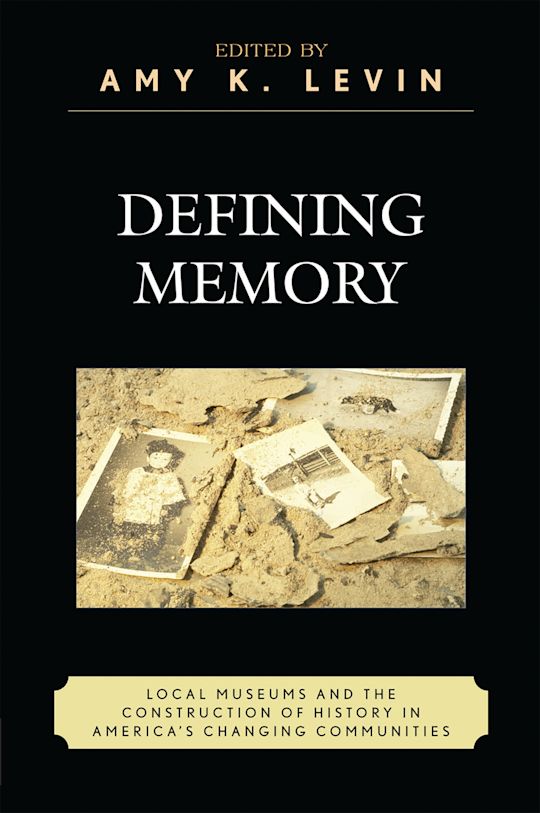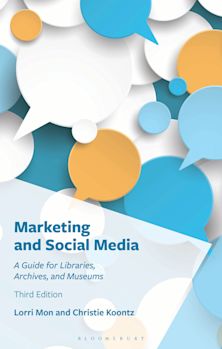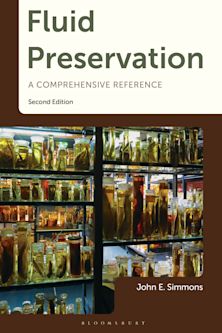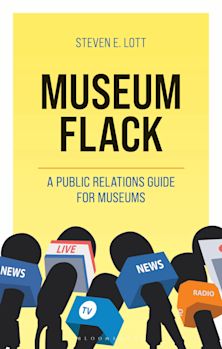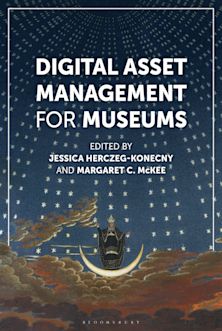- Home
- ACADEMIC
- Museum Studies
- Defining Memory
Defining Memory
Local Museums and the Construction of History in America's Changing Communities
Amy K. Levin (Anthology Editor) , Tami Christopher (Contributor) , James Connor (Contributor) , J Daniel d'Oney (Contributor) , Jessie Embry (Contributor) , Eric Gable (Contributor) , Lucian Gomoll (Contributor) , Richard Handler (Contributor) , Donna Langford (Contributor) , Amy Levin (Contributor) , Mauri L. Nelson (Contributor) , Stuart Patterson (Contributor) , Heather Perry (Contributor) , Jay Price (Contributor) , Michael Rhode (Contributor) , Eric Sandweiss (Contributor) , Elizabeth Vallance (Contributor) , David Kyvig (Foreword)
Defining Memory
Local Museums and the Construction of History in America's Changing Communities
Amy K. Levin (Anthology Editor) , Tami Christopher (Contributor) , James Connor (Contributor) , J Daniel d'Oney (Contributor) , Jessie Embry (Contributor) , Eric Gable (Contributor) , Lucian Gomoll (Contributor) , Richard Handler (Contributor) , Donna Langford (Contributor) , Amy Levin (Contributor) , Mauri L. Nelson (Contributor) , Stuart Patterson (Contributor) , Heather Perry (Contributor) , Jay Price (Contributor) , Michael Rhode (Contributor) , Eric Sandweiss (Contributor) , Elizabeth Vallance (Contributor) , David Kyvig (Foreword)
You must sign in to add this item to your wishlist. Please sign in or create an account
Description
Defining Memory uses case studies of exhibits from around the country to examine how local museums, defined as museums whose collections are local in scope or whose audiences are primarily local, have both shaped and been shaped by evolving community values and sense of history. Levin and her contributors argue that these small institutions play a key role in defining America's self-identity and should be studied as seriously as more national institutions like the Smithsonian and the Metropolitan Museum of Art.
Table of Contents
Chapter 2 Foreword
Part 3 I. Frameworks
Chapter 4 1. Why Local Museums Matter
Chapter 5 2. Local History, "Old Things to Look At," and a Sculptor's Vision: Exploring Local Museums through Curriculum Theory
Part 6 II. The Rebirth of a Nation
Chapter 7 3. Public History, Private Memory: Notes from the Ethnography of Colonial Williamsburg, Virginia, USA
Chapter 8 4. The House of Seven Gables: A House Museum's Adaptation to Changing Societal Expectations since 1910
Chapter 9 5. Louisiana's Old State Capitol Museum: Castle on the Mississippi
Part 10 III. Nostalgia as Epistemology
Chapter 11 6. The Small Town We Never Were: Old Cowtown Museum Faces an Urban Past
Chapter 12 7. Democratic Nostalgia: Arthurdale, West Virginia, as a 'Living Museum'
Chapter 13 8. History Lessons: Selling the John Dillinger Museum
Part 14 IV. Museums at Risk
Chapter 15 9. Dickson Mounds Museum: Conflict and Resolution
Chapter 16 10. 'Such is Our Heritage:' Daughters of Utah Pioneers Museums
Chapter 17 11. Curating America's Army Medical Museum
Part 18 V. Challenging the Major Museum
Chapter 19 12. Objects of Dis/order: Articulating Curiosities and Engaging People at the Freakatorium
Chapter 20 13. Cities, Museums, and City Museums
Part 21 VI. No Business Like Show Business
Chapter 22 14. Business as Usual: Can Museums be Bought?
Chapter 23 15. Conclusion: Museums and the American Imagination
Chapter 24 Selected Bibliography
Product details
| Published | 01 Mar 2007 |
|---|---|
| Format | Ebook (Epub & Mobi) |
| Edition | 1st |
| Extent | 298 |
| ISBN | 9780759113886 |
| Imprint | Rowman & Littlefield Publishers |
| Series | American Association for State and Local History |
| Publisher | Bloomsbury Publishing |
About the contributors
Reviews
-
Defining Memory is an important and long-overdue piece of work that not only highlights the significant influence of local museums in their communities but also discloses them as lenses for understanding our greater contemporary American community. Because there has been no sustained support for local museums in the United States, their growth and even survival continues to be uncertain. It is through the work of authors like those in this book that local museums have a chance to shine as important cultural and educational assets for all citizens.
Rosa Cabrera, Field Museum
-
This collection of essays edited by Amy Levin illuminates the rich diversity of America's lesser-known local museums. Levin and her colleagues provide rich descriptions of a remarkable diversity of institutions. . . . Their selections reflect the wide variety of museums spread across the land and ranging from professionally to haphazardly administered, from well to precariously supported, and from broadly representative to highly unusual in content. More important, the authors raise significant questions about the functions of museums and the way in which they should be organized, employed, and explained. . . . Levin and company force readers to think about what to expect from museums, what to demand, what to enjoy, and what might be best not to encounter. . . . Anyone interested in a nearby past will find themselves constantly intrigued, frequently amused, occasionally astonished, repeatedly enlightened, and, above all, amply rewarded.
David Kyvig, Northern Illinois University, from the foreword
-
Anyone interested in museums or historical societies will find something of interest here.
Patricia Mooney-Melvin, Loyola University Chicago
-
Some people will find comfort in these pages, seeing similar situations; others will be surprised at the sorts of problems other museums face; while still others will think that their own situation is not so bad after all. Within these pages, everyone will encounter museum directors and educators attempting to keep up with the field and represent the past in as careful a manner as possible. This is a fine contribution to the field.
Carol Kammen, author of On Doing Local History
-
This book captures the cacophonous bouquet(to mix metaphors) that are our local museums. How often have each of us been captivated by such a museum! The thoughtful insights this book provides certainly expanded my sense of what the museum universe is and should be. Hooray for cacophony as opposed to the sedate murmurs of proper museums.
Patterson B. Williams, Senior Educator, Denver Art Museum
-
The contributors to Defining Memory combine intriguing subject matter with reflective commentary to provide highly readable, stimulating essays that will be equally useful in the classroom, the staff conference room, and the boardroom.
Rebecca Conrad, Kansas History: A Journal of the Central Plains









